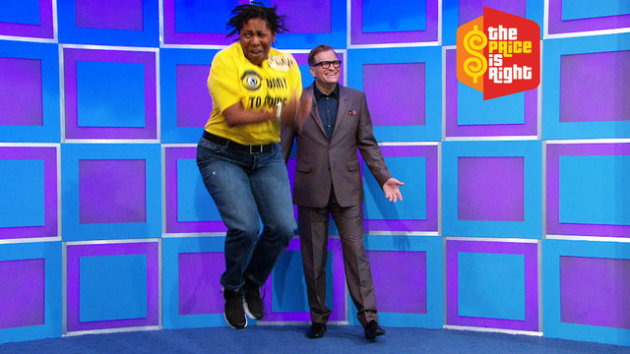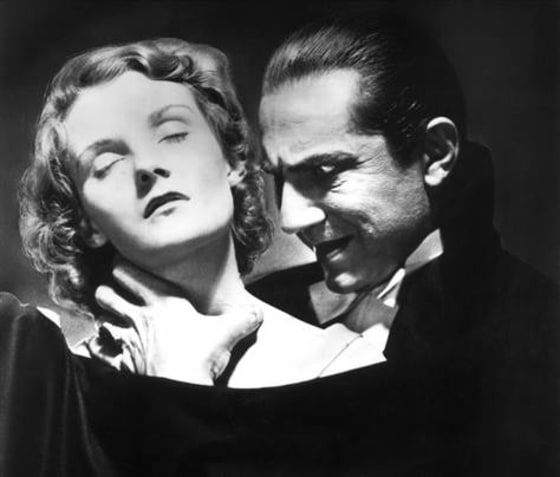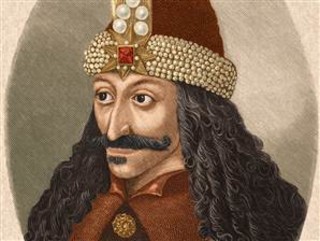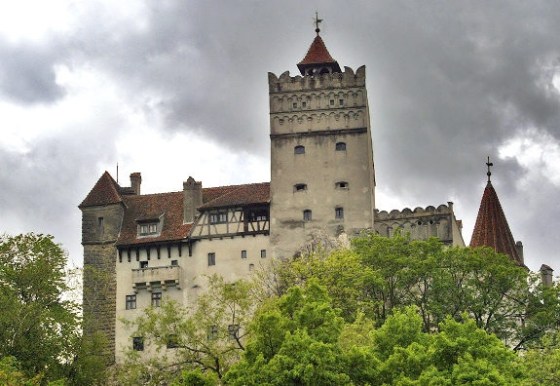What Makes 'The Price Is Right' One of TV's Most Successful Shows?
When the current incarnation of "The Price Is Right" debuted on Sept. 4, 1972, the Watergate cover-up was just getting rolling, men were still landing on the moon, Jane Fonda was crossing over into enemy territory in North Vietnam, and not a single U.S. household was wired for cable. Bobby Fischer became world chess champion the week that "Price" first appeared on the public airwaves, and 11 Israeli athletes were taken hostage at the Olympic Games in Munich the day after its debut.
Everything in the world has changed since, but 6,474 episodes later, "The Price Is Right" is still on the air for one full hour every single weekday, still beckoning audience members to "come on down," still handing out new cars to ecstatic contestants, and still as popular and beloved as it was during the Nixon era.
"The Price Is Right" may well be one of the most successful shows in television history.
What is the lure of "The Price Is Right"? And what keeps fans coming back? Why do its bells and whistles continue to mesmerize while other shows and genres come and go? We paid a visit to the set on the occasion of its special Halloween episode to see if we could find out.
The crowds arrive early, and from the first, they are excited. Very excited. Knowing that it will be a Halloween-themed episode, many are in costume, even though it is early September. Sitting on long rows of metal benches spanning the outside of the Television City studios in Los Angeles, Calif., they can barely contain themselves as they crane their necks staring up at videos of great "Price" moments. Producer Mike Richards explains that the team makes sure the entire experience — from arrival at the studio gates to "Showcase Showdown," "feels like a ride."
But it's a ride with a lot on the line. Each audience member is, of course, a potential contestant on the show. While they wait to enter the studio, each is interviewed and photographed. According to Stan Blits, the co-producer who leads the all-important task of "casting" the show each day, the questions are asked not so much to learn the audience members' answers "but to see how they act, how much excitement they show. Who freezes up." Their files are then taken upstairs, reviewed, and discussed, and the magic names are chosen, their papers spread on a conference table like mug shots, while downstairs the people have no idea what destiny awaits them.
It is the genius of the "Price Is Right" format, Mike Richards explains, that at the very top of the show, before the host has even appeared onstage, you have four winners. On other game shows, contestants are screened and informed of their taping schedule months in advance, giving them time to pick out outfits and compose themselves into sober, restrained television fixtures. On "Price," we are there with them at the moment when they hear the magic words "Come on down!" Just becoming a contestant is a prize, and the contestants' giddiness at having been selected doesn't even begin to deflate the entire game.
Upstairs, the final touches are being put on the Halloween set, complete with gravestones and spider webs. Host Drew Carey — in the role today of Count Drewcula, though not yet in his spooky makeup — practices his entrance descending from the rafters in cargo shorts. He descends with the cape wrapped over his face, and they lower him a few times, searching for the exact right spot for him to open his arms and reveal the Drewcula beneath. Carey and Richards debate where the reveal should hit and how much flapping he should do. "You look like you were flying angry," Richards says of one take. He asks the crew on the ropes if they can "turn his body a little so we can read his name tag."
Across the stage, announcer George Gray runs through his lines. Clad in a green body suit, he shines a flashlight at his face, preparing to appear like a floating disembodied head during the show. Members of the crew take pictures of the remade set for keepsakes. A car that is to be driven onstage by a remote-controlled skeleton is pushed into position; the models who display the prizes, themselves in spooky makeup, pose alongside.
One of the first things one notices on the "Price Is Right" set is how much fun everyone seems to be having. Ninety-five percent of TV production involves waiting around — while lights are adjusted, sound levels are checked, and myriad other details area taken care of. Life on a set is typically downright tedious, and the mood is generally one of quiet professionalism at best, annoyed testiness more often. To say that the crew whistles while they work on "The Price Is Right" maybe takes it too far, but throughout the day, everyone from the host and executive producer to the guys who hold the cue cards seem engaged and excited to be here. They may not be bouncing up and down in their seats with excitement like the audience members, but their smiles don't stop. When the cameras are rolling, everyone stops what they are doing to watch the show on the monitors — something that definitely is not typical on most sets. The details of the Halloween makeover seem to tickle everyone. That they are maintaining this energy 6,474 shows into "Price's" run is miraculous.
[Related: TV's 60 Greatest Catchphrases]
Host Carey explains later, "Being in this energy all day is amazing. You live here surrounded by all these extra endorphins. Being around this kind of happiness all day, it's amazing what it does for you emotionally and psychologically. You just feel better. Automatically you're just in a better mood just being in the building. Even the crew's happy."
Bristling with energy, the moment of truth approaching, the audience is hustled in to take their seats, escorted by zombie ushers. Perhaps unique among game shows, "The Price Is Right" has no obnoxious warm-up comic, but it relies on the host and the announcer themselves to chat with the crowd and keep them entertained. Having an accomplished comedian as the host certainly helps. Bob Barker in his day functioned as the chief cheerleader — a figure from the Ed Sullivan era to intone "How about that?" in appreciation of every act big and small.
Carey, in contrast, seems the wise guy at the dinner table, making ironic observations about audience members, poking fun at their excitement, their hometowns, their professions. He threatens to bite and kill a lawyer, and when one audience member reveals that she is a flight attendant, Carey shoots back, "Where's my bags, bitch?" Later in the show, Carey, in the Halloween spirit, will refer to one of their prizes — a Honda motorcycle — as a "death machine."
We ask him later if he is trying to push the boundaries of what is acceptable in the most Middle American of entertainments. Not at all, he says. "I think I'm being funny. I'm not looking to test the limits. I'm just teasing and having fun. If you're trying to be funny and in your head you're worried about what you can do and what you can't, you'll never be funny. I never want to make fun of anybody — I never want to hurt their feelings and make fun of them; you want to have fun with them."
However, the yukking it up with Drewcula is not all fun and games. To the side of the stage, co-producer Hilts watches. His first choices for who will play having been made, he is studying them as they sit in the audience watching Drew, unaware that their destinies hang in the balance. "Once we make our picks, we watch them on the line, we watch them in the audience. Anyone who looks tired, who crosses their arms and gets quiet, we yank them and go to our list of backups."
Backstage, Richards talks about his most unusual path to running a network show, particularly one as august as "Price." An actor himself who had hosted the NBC reality competition "Beauty and the Geek," he initially came in to audition for the hosting role as the producers faced the most perilous moment in the show's history: filling the shoes of the show's iconic host, Bob Barker. After having guided "Price" since its premiere, Barker was at last moving on.
The part eventually went, of course, to Carey, but Richards's preparation for the audition and his thoughts about the show impressed its overlords so much that months later, they asked him to come aboard behind the scenes. He remembers how he began thinking about the challenge of moving "The Price Is Right" forward to a post-Barker era while not alienating its fanatically loyal fan base.
"I spent four months kind of deconstructing the show," Richards recalls. "During my workout, I had it on, and I had a notepad, and by the end I had 60 pages of notes. I looked at what was 'The Price Is Right' without Bob Barker, because at the time it was impossible to imagine it. So when I got the call about stepping in, I was very clear about what was great about the show and what it was that Drew did well. It was my job to fuse the two, because Drew was still hosting Bob's show. But Drew is very different."The fusion occurred while retaining the basic skeleton of the show, the format, the "Come on Down" — looking for places to freshen up the production and let it reflect Carey's interests and his style. "It was about getting hipper prizes," Richards says. "Drew really likes technology. He likes amazing trips. He really likes giving away big amounts of money. And the shooting style of the show had to change because Bob was a technician. He hit every mark and did the rules of the games perfect every time and would bring the show in on time every episode. You could be four minutes long halfway through and he'd get it on time. That's not Drew. He's an improv guy. So it has to be looser; you have to take risks in how you shoot it."
[Related: The 10 Best Celebrity Game Show Freak-Outs]
Once the cameras begin to roll, it is as though all that energy and excitement that has been building in the audience rolls like a tidal wave over the set. On TV, you see the joy as people bound down the aisle to join the chosen at the podium. In person, the entire room explodes with such glee for the select few that it is hard to maintain a cynical detachment and not find yourself grinning at the spectacle.
We've all seen new cars in our time. When someone buys one these days, neighbors rarely pour out of their houses to dance in the street. In its four decades, "The Price Is Right" has given away literally thousands of cars. But the excitement when George Gray informs the audience that the next prize will be "a brand-new car!" is worthy of a religious revival meeting. The hysteria would put teenage girls screaming at a One Direction concert to shame. Carey, through his vampire makeup, breaks a smile every time. "Cars, cash, and trips — that's what people want to win," he offers later. "It's one of those big purchases — a house and a car. It's the second-biggest thing people ever pay for their whole life besides their house."
And that is the key, perhaps, to "The Price Is Right." It's not offering impossible dreams of recording contracts, eternal fame, or true love. The gifts are things you use, you need, you stress over the costs of. The stars are not reality show freaks but very familiar people who for a moment get to be a part of something that they have known and watched from afar, by and large, their entire lives.
As the show winds down, we spot an older woman who has just lost the "Showcase Showdown" being led through the wings back to her seat. She is the happiest loser you've ever seen, still trembling with excitement and joy just for having stood on that stage.
As long as "The Price Is Right" can keep manufacturing that feeling, it will last for a long time to come.
Follow Richard Rushfield on Twitter, Tumblr, and Google Plus.









